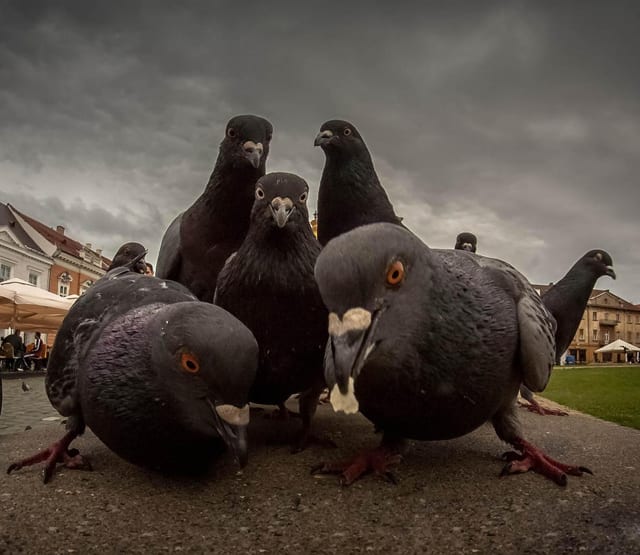
by Pigeon Patrol | Jul 6, 2023 | Bird Spike, Pigeon Predators, Pigeon Spikes, Pigeons, Pigeons in the News, Raccoons, Sparrows, UltraSonic Bird Control
A number of pigeons found dead in traps along SkyTrain routes in Vancouver have sparked concern from the public, but the pest control company that runs these traps says it has nothing to do with neglect.
Commuter Zahra Ahmdz started a petition against transit operator TransLink in the summer of 2021 after noticing the traps inside the Stadium-Chinatown station on her way to work, and what she said was very clearly multiple dead pigeons inside.
“It was very, very shocking. I didn’t think this would happen in Canada,” she said.
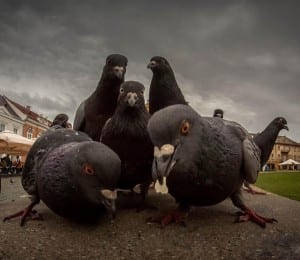
The traps are one of several methods TransLink uses to control the population of pigeons at SkyTrain stations, but the birds are never supposed to die inside. TransLink hires a pest control company to check the traps once a week, ensure there is adequate food and water inside and humanely kill any birds captured.
Media relations advisor Thor Diakow said it’s possible some pigeons did die inside the cages last summer, as TransLink was between pest control companies and didn’t maintain the cages itself in the meantime.
Ahmdz said the problem didn’t stopped there though.
Photos she said she took in March and May appear to show more dead pigeons inside the cages. And Ahmdz said after she complained to TransLink and the BC SPCA, small barriers were erected making it more difficult for her to see the birds.
“This is cruelty,” Ahmdz said.
Pest control company claims no neglect
The pest control company in charge of the cages disagrees. Atlas Pest And Wildlife Control has been working for TransLink since around November or December 2021, according to its president Raymond Arthurs. He readily admitted that they sometimes find pigeons dead inside the cages during their weekly checks, but said it’s not because of neglect on their part.
“Sometimes a hawk will get inside and kill them,” Arthurs said. “That’s kind of all natural.”
As for the barriers, Arthurs said they’re partially to stop people from tampering with the cages and partially to protect the birds from water dripping from the ceiling or other elements.
He said if the weather drops below zero, they leave the cages open as they know the water bowls inside will freeze over. They don’t have a system in place yet for hot weather, as they haven’t worked a summer for TransLink yet, Arthurs added.
He said he couldn’t comment on the exact number of pigeons that have died in his company’s cages. They keep weekly records of their activities, but Arthurs said only TransLink can decide who to provide them to. TransLink agreed to give them to Black Press Media, but said they weren’t available at the time of publication.
A move toward birth control
Both emphasized that they are starting to move away from traps and towards birth control methods.
The BC SPCA pushed TransLink to pilot test OvoControl birth control in several stations for 18 months in 2019 and 2020 after similar complaints about trapped pigeons were brought forward.
BC SPCA chief scientific officer Sara Dubois said the results were exactly what they expected – the population stabilized. She said she was disappointed when TransLink chose not to continue with the long-term solution.
More than a year later though, Diakow said TransLink is now recommitting to the method and will have permanent OvoControl dispensers in some SkyTrain stations come summer.
TransLink also uses bird spikes, netting and low-charge electric strips to deter pigeons from roosting in stations. Diakow said their main concern is the potential for bacterial infections from the birds’ droppings, but that pigeons are also one of a number of animals that regularly set off TransLink’s highly sensitive intrusion alarms.
In 2021, Diakow said wildlife set off the alarms 544 times, resulting in between 12 and 20 hours of transit delays. He said it’s impossible to know how many pigeons alone were responsible for.
Feeding wildlife is feeding the problem
He and Dubois said a large part of the problem is people drawing the pigeons to the stations.
“There’s these regulars that always show up and feed the birds,” Diakow said.
Often times, he said they do so just off TransLink property, so staff can’t actually do anything about it.
Dubois said she’s hopeful Vancouver’s new bylaw banning feeding wildlife in city parks could help, though. She said she’d like to see TransLink work with bylaw on solutions.
Diakow said they’re looking into putting up signage at the stations.
Source
Pigeon Patrol Products & Services is the leading manufacturer and distributor or bird deterrent (control) products in Canada. Pigeon Patrol products have solved pest bird problems in industrial, commercial, and residential settings since 2000, by using safe and humane bird
deterrents with only bird and animal friendly solutions. At Pigeon Patrol, we manufacture and offer a variety of bird deterrents, ranging from Ultra-flex Bird Spikes with UV protection, Bird Netting, 4-S Bird Gel and the best Ultrasonic and audible sound devices on the market today.
Voted Best Canadian wholesaler for Bird Deterrent products ten years in a row.
Contact us at 1 877-4-NO-BIRD,(604) 585-9279 or visit our website at www.pigeonpatrol.ca
Pigeon/Pigeon Patrol / Pigeons Roosing / Vancouver Pigeon Control / Bird Spikes / Bird Control / Bird Deterrent / PIgeon Deterrent / Surrey Pigeon Control / Pest / Seagull deterrent / Vancouver Pigeon Blog / Birds Inside Home / Pigeons in the cities / Ice Pigeons / What to do about pigeons / sparrows, Damage by Sparrows, How to Keep Raccoons Away, Why Are Raccoons Considered Pests / De-fence / Pigeon Nesting / Bird Droppings / Pigeon Dropping / woodpecker control / Professional Bird Control Company / Keep The Birds Away / Birds/rats/seagull/pigeon/woodpecker/dove/sparrow/pidgeon control/pidgeon problem/pidgeon control/flying rats/pigeon problems/ bird netting/bird gel/bird spray/bird nails/bird guard
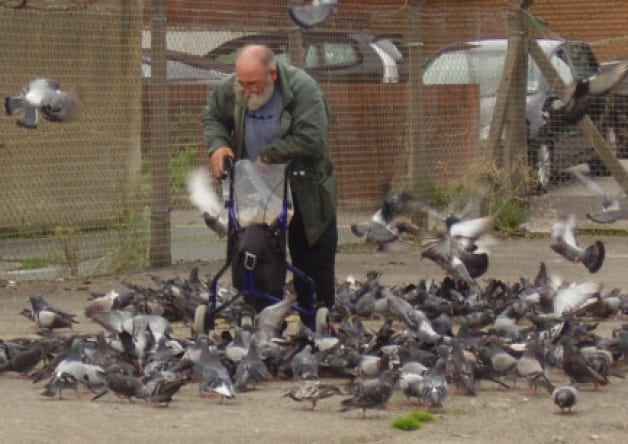
by Pigeon Patrol | Jul 6, 2023 | Bird Spike, Pigeon Droppings, Pigeon Patrol's Services, Pigeon Predators, Pigeon Spikes, Pigeons
Pigeons are often referred to as ‘rats with wings’ and like rats they have adapted well to live side by side with humans in our environment. Vast amounts of buildings and structures provide the perfect perch for pigeons to rest and our food waste and crops provide a healthy supply of food as they will eat anything they can find. Our lifestyle has eliminated any potential predators or competitors so pigeons have been allowed to thrive.
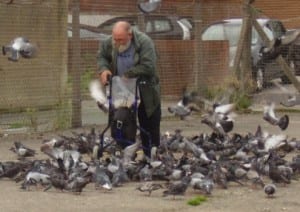
Before you try and deal with a pigeon problem on your own it is important to remember that they are not just your average pest! It requires a level of skill, expertise and a bit of imagination. A control method that works in one instance will not necessarily work in another. This is why it often requires several strategies used in unison. Whether you want to give it a go yourself or just see what options there are you will find all the pigeon control methods you need to know below.
Pigeon Control
Live Pigeon Traps – This is a highly recommended control method. Bob traps work well in most cases. Use a bait, wheat or corn will do, the birds will enter the trap through a one-way door so once inside they can’t get back out. Leave a few pigeons inside the trap as this will encourage more of these social birds into the trap. Only try this method if you are willing to kill the birds once they are caught because releasing them will not solve the problem. Call a professional pest control company if you are unsure.
Exclusion – Exclusion also known as pigeon proofing involves modifying your property to make it inaccessible to pigeons, no place to land means no pigeons! Pigeon spikes, bird slopes, bird netting, bird wires, electrified tracks and wiring can all be effective at deterring pigeons. It requires a level of skill to install thee product so it’s important to remember this before you run off to the shops and buy one of these proofing methods. Pigeon proofing can be expensive but it is also very effective and the short-term cost can save you a lot of money in the long run so it is important that they are installed properly.
Pigeon Repellents – This is a control method that makes a pigeons roosting area inhospitable without causing any harm to the bird. They are often in gel or liquid form, usually, soft, sticky or hot. It irritates the birds when they land making them fly off and find somewhere else. This is a good quick fix; these products are cheap and easy to use. However, the downside is it is only a temporary fix and can be a mess job.
Source
Pigeon Patrol Products & Services is the leading manufacturer and distributor or bird deterrent (control) products in Canada. Pigeon Patrol products have solved pest bird problems in industrial, commercial, and residential settings since 2000, by using safe and humane bird
deterrents with only bird and animal friendly solutions. At Pigeon Patrol, we manufacture and offer a variety of bird deterrents, ranging from Ultra-flex Bird Spikes with UV protection, Bird Netting, 4-S Bird Gel and the best Ultrasonic and audible sound devices on the market today.
Voted Best Canadian wholesaler for Bird Deterrent products ten years in a row.
Contact us at 1 877-4-NO-BIRD,(604) 585-9279 or visit our website at www.pigeonpatrol.ca
Pigeon/Pigeon Patrol / Pigeons Roosing / Vancouver Pigeon Control / Bird Spikes / Bird Control / Bird Deterrent / PIgeon Deterrent / Surrey Pigeon Control / Pest / Seagull deterrent / Vancouver Pigeon Blog / Birds Inside Home / Pigeons in the cities / Ice Pigeons / What to do about pigeons / sparrows, Damage by Sparrows, How to Keep Raccoons Away, Why Are Raccoons Considered Pests / De-fence / Pigeon Nesting / Bird Droppings / Pigeon Dropping / woodpecker control / Professional Bird Control Company / Keep The Birds Away / Birds/rats/seagull/pigeon/woodpecker/dove/sparrow/pidgeon control/pidgeon problem/pidgeon control/flying rats/pigeon problems/ bird netting/bird gel/bird spray/bird nails/bird guard
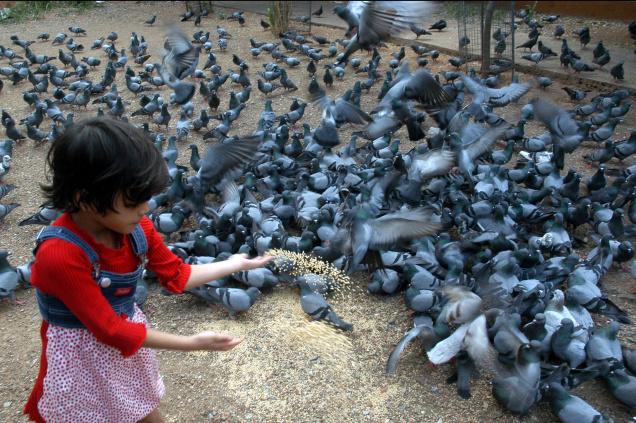
by Pigeon Patrol | Jul 6, 2023 | Bird Spike, Pigeon Spikes, Pigeons, Pigeons in the News, Raccoons, Sparrows, UltraSonic Bird Control
People often have no previous experience with pigeons or bird rescue. They did not wake up in the morning expecting to cross paths with a pigeon, but then an unexpected guest lands in their backyard, or on their roof, and it seems like something other than a random city pigeon. Perhaps it has an unusual appearance, or bands on its legs, perhaps it is alone with no flock, perhaps it seems weak or unable to fly. There’s no doubt that this is a pigeon in need of help, either because it is ill, starving, or a domestic breed lacking in survival skills. Pigeons and doves are preyed upon by hawks, ravens, gulls, cats, raccoons, rats, and more and, if you can catch the bird, she needs to be caught.
But how to catch?
First, rest assured that catching a pigeon is indeed possible, and safe- for both the bird and for you. Your catching the bird will be a lot safer for her than if a predator catches her. You will not scare a pigeon to death or give her a heart attack. And pigeons are harmless to us. They can’t really bite (no teeth and their beak is soft and weak) and, contrary to popular belief, you are highly unlikely to ever be made sick by a pigeon. There are very few diseases that you can catch from them and you are far, far more likely to get sick from a dog or cat (or be struck by lightning, actually). Simple soap-and-water hand washing after handling any animal can reduce the chances of illness to near zero.
So, let’s catch the pigeon!
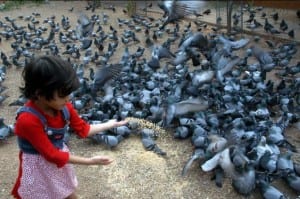
There are a few different methods that have a good success rate. Much will depend on what you are most comfortable with and what kind of shape the pigeon is in.
The first and easiest method is simply to scoop the pigeon up in your hands. People often tell us that they have found a pigeon that seems exceptionally tame and friendly and allowed itself to be picked up. If you can just pick it up, though, there’s a good chance that the pigeon is in real trouble. It may be starving, dehydrated, and/or injured.
A bird that tries to get away from you, but is weak or unable to fly, can often be walk-herded into a corner or inside through an open door and then caught (by hand or with a blanket, towel, or sweater). Drop the cloth over the bird and gently pick it up inside the cloth. Make sure the bird’s wings are folded against its sides, and hold it so that your hands encircle the wings and body, to prevent panicked flapping. A bird in this condition will likely need to be assessed by an expert.
Is your visitor lively? Flies away when you get too close? It’s good to see a strong and healthy pigeon, but this will present a challenge in actually getting your hands on the bird. The method that most often succeeds in catching a bird that is unwilling to be caught, is the crate-and-string method. You’ll need a cage or crate of some kind — a black wire dog crate works well. Put seeds and water deep in the center of the cage (beyond the reach of a clever bird who pokes her head in from the sides or back), and a thin trail of seeds leading up to the cage door (not too much, the bird needs to be hungry to risk entering what they know is a trap). Pigeons are especially fond of chopped peanuts and safflower seeds, but an ordinary bird seed mix for either pet or wild birds will work. Even rice -cooked or raw- can work in a pinch (there is a persistent myth that rice is harmful for birds, but it’s actually fine to use) or dry lentils, quinoa, crushed cereal, etc. will work for a hungry bird.
You’ll want to tie a long piece of string to the cage door in such a way as, when you pull it, the door pulls closed, and then sit at some distance, with the string in your hand. You might need to be out of the bird’s line of vision if it is particularly skittish. Eventually the bird should enter the cage to get the food, at which point you will pull on the string to close the door. Be patient. This can take some time (days even, just leave the door open when you’re not around & only put food inside so they have to go in) but is a very reliable and bird-friendly method. If the pigeon panics after the door is closed and starts thrashing around, cover the crate with a blanket to help calm her and bring the crate and bird indoors to safety. (You can’t leave her outside as predators can do terrible damage to an unsafely confined bird.) And don’t feel badly about having caught her. You most likely just saved her life and she’ll calm down.
Another method for catching a healthy unwilling pigeon is what we call the Wile E. Coyote box trap. Take a medium size box or laundry basket, turn it upside down and prop up one end with a stick. Place food and water underneath the box, with a trail leading up to it. Tie a string to the bottom part of the stick, and sit at a distance away with the other end of the string in your hand. When the pigeon ventures under the box to get the food, pull the string to remove the stick, and the box will fall, trapping the pigeon underneath.
You will at this point need to carefully reach underneath the box to get the pigeon. You won’t be able to see what you’re doing, because if you lift the box too high the pigeon will escape. You might try putting a big blanket over the box and yourself, while you try to catch the pigeon. Your neighbors will wonder about you. But it can work.
You can also buy or create a humane trap with a one-way door so that once they’ve gone in, they can’t get back out. (Monitor the trap closely though and do not leave out unsupervised or overnight. Once trapped, the bird will attract and be terribly vulnerable to predators including rats, cats, hawks, raccoons, ravens, gulls, dogs, etc.)
A third method for catching a pigeon is to find where it is roosting at night. Pigeons have very poor night vision, and tend to hold still in the dark if they sense danger approaching, hoping that it passes them by. You may be able to climb a ladder and grab the pigeon with your hands. This works best if done in the dark so turn lights off and let your eyes adjust (yours will, the pigeon’s won’t). Then very quietly and without hesitation, grab the bird with both hands around the body. Be prepared for her to startle and try to get away. Don’t let go and make that first grab count because if she gets away, she’ll risk flying off even in the dark.
The final method is one that takes a bit of practice, plus good reflexes and careful timing. It is best used on a pigeon that is hanging out with a wild flock, and it’s the method that we use for “destringing” work, when we are trying to catch wild pigeons who are suffering from injuries to their feet caused by string and debris wrapped around their toes (ever wondered why city pigeons often have missing toes or deformed feet? Now you know!) With this method, you’ll spread a generous amount of food on the ground, in a line that measures three or four inches wide and about a foot and a half long. Stand fairly close to the food with your feet spread a distance apart. The pigeons should approach and cluster around, trying to eat as much as possible and certainly more than the pigeons on either side of them. They will be eyeing the food and each other, while you stand nearby, periodically sprinkling more food. Keep your eye on the pigeon you want to catch. Slowly advance until your open hand is hovering, palm down, immediately above the pigeon, then, in one swift motion, drop your hand down, pinning the bird to the ground. It really helps to practice this multiple times, using a shoe or a loaf of bread in place of the pigeon. You’re going to be going very quickly from a standing to a crouching or lunging position, and you don’t want to topple over, so practice the motion until you feel confident.
If you try and miss, the pigeons may scatter and be skittish for a time, but overcoming their caution is sometimes just a matter of moving the food to a slightly different location. You usually get multiple chances. This is not because pigeons are stupid (they are not), but because pigeons are more trusting than most birds (and very hungry). Despite a long history of mistreatment at the hands of human beings, their species, in general, has a benevolent view of ours.
Once caught, you must bring the bird indoors to safety. The vast majority of cages are made only to confine a bird indoors and are not at all safe outside. Leaving a bird outdoors in an indoor cage is basically creating a foraging toy for predators. Hawks, raccoons, cats, rats can all do terrible damage to an unsafely caged bird, right through the bars. Once safely indoors, you need to find a pigeon-friendly expert to help you assess the bird. Many are in critical condition by the time they are caught but recognizing that and supporting them through it takes knowledge and experience.
Source
Pigeon Patrol Products & Services is the leading manufacturer and distributor or bird deterrent (control) products in Canada. Pigeon Patrol products have solved pest bird problems in industrial, commercial, and residential settings since 2000, by using safe and humane bird
deterrents with only bird and animal friendly solutions. At Pigeon Patrol, we manufacture and offer a variety of bird deterrents, ranging from Ultra-flex Bird Spikes with UV protection, Bird Netting, 4-S Bird Gel and the best Ultrasonic and audible sound devices on the market today.
Voted Best Canadian wholesaler for Bird Deterrent products ten years in a row.
Contact us at 1 877-4-NO-BIRD,(604) 585-9279 or visit our website at www.pigeonpatrol.ca
Pigeon/Pigeon Patrol / Pigeons Roosing / Vancouver Pigeon Control / Bird Spikes / Bird Control / Bird Deterrent / PIgeon Deterrent / Surrey Pigeon Control / Pest / Seagull deterrent / Vancouver Pigeon Blog / Birds Inside Home / Pigeons in the cities / Ice Pigeons / What to do about pigeons / sparrows, Damage by Sparrows, How to Keep Raccoons Away, Why Are Raccoons Considered Pests / De-fence / Pigeon Nesting / Bird Droppings / Pigeon Dropping / woodpecker control / Professional Bird Control Company / Keep The Birds Away / Birds/rats/seagull/pigeon/woodpecker/dove/sparrow/pidgeon control/pidgeon problem/pidgeon control/flying rats/pigeon problems/ bird netting/bird gel/bird spray/bird nails/bird guard
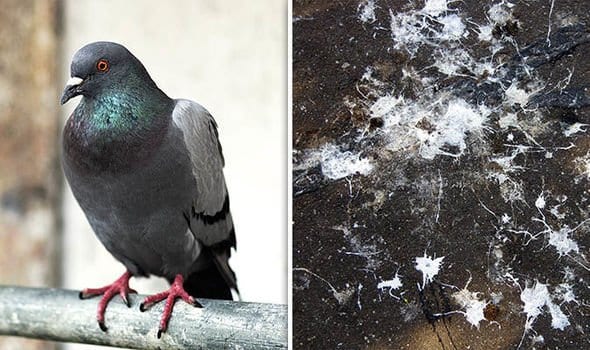
by Pigeon Patrol | Jun 30, 2023 | Bird Spike, Pigeon Predators, Pigeon Spikes, Pigeons, Pigeons in the News, Raccoons, Sparrows, UltraSonic Bird Control
If you don’t want pigeons nesting around your property, there are a number of ways you can scare them off when it looks like they might be getting comfortable.
Spray With Water
A great way to scare pigeons away without causing them any harm is to spray them with the garden hose. It’s highly unlikely they’ll appreciate getting drenched so you can guarantee they won’t hang around for long.
It’s important to do this when the birds first arrive so they know this isn’t a comfortable place to set up home. If you wait until they’ve set up a roost, not even a good soaking will get them to budge.
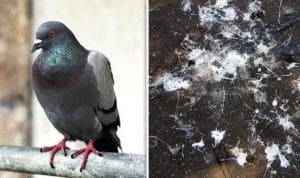
Install Scare-Pigeons
These lightweight kites are usually sold in the form of hawk silhouettes and when placed where pigeons usually roost, they’re a great scare tactic. A good tip is to move the decoy on a regular basis because pigeons will get used to its presence and won’t be scared of it anymore – especially because it doesn’t make a noise.
Use Reflective Surfaces
When the sun hits a reflective object, it creates a prism effect which interferes with pigeons’ eyesight. If your roof, balcony or windowsills are covered with anything from reflective tape to foil balloons, it’s highly unlikely they will settle. Another great way to deter pigeons from settling around your property is to hang old CDs from nearby trees or along awnings.
Install Sloped Sheathing
To keep pigeons off ledges and other flat surfaces, cover them with a sloping piece of sheet metal. If they physically can’t settle somewhere then they won’t.
When To Call A Pest Controller
The best way to deal with a pigeon problem is to call a pest controller. They will know exactly how to get rid of them and importantly, how to keep them away for good.
Pest control companies are well training on what systems to install to provide the best solution to your problem. From installing a netting system to anti-pigeon spikes, or wire systems on window ledges and leading edges.
What Won’t Work
There are many myths surrounding pigeons and how to scare them away but unfortunately, most of them are a waste of time because they simply don’t work.
- Noises – Everyone assumes that loud noises will scare these birds away but if you consider the pigeon population of London, it’s evident that this simply isn’t true. Pigeons are city birds – they’re used to loud noises and they don’t startle easily so unfortunately, no amount of noise is likely to drive them away.
- Ultrasonic Noises – Ultrasonic noise may seem like a great way to scare off pigeons but sadly, this method doesn’t work either. Ultrasonic sound waves bounce off objects, creating spots where pigeons can completely avoid the sound. Not only will you still be faced with a pigeon problem, these devices can also damage the hearing of cats and dogs.
- Ignoring the problem – Sadly burying your head in the sand won’t make these pests go away. Once they have found an Idyllic home location they will settle for life, so If left untreated the population will grow and grow, and so will the impact on your premises and surrounding area
Source
Pigeon Patrol Products & Services is the leading manufacturer and distributor or bird deterrent (control) products in Canada. Pigeon Patrol products have solved pest bird problems in industrial, commercial, and residential settings since 2000, by using safe and humane bird
deterrents with only bird and animal friendly solutions. At Pigeon Patrol, we manufacture and offer a variety of bird deterrents, ranging from Ultra-flex Bird Spikes with UV protection, Bird Netting, 4-S Bird Gel and the best Ultrasonic and audible sound devices on the market today.
Voted Best Canadian wholesaler for Bird Deterrent products ten years in a row.
Contact us at 1 877-4-NO-BIRD,(604) 585-9279 or visit our website at www.pigeonpatrol.ca
Pigeon/Pigeon Patrol / Pigeons Roosing / Vancouver Pigeon Control / Bird Spikes / Bird Control / Bird Deterrent / PIgeon Deterrent / Surrey Pigeon Control / Pest / Seagull deterrent / Vancouver Pigeon Blog / Birds Inside Home / Pigeons in the cities / Ice Pigeons / What to do about pigeons / sparrows, Damage by Sparrows, How to Keep Raccoons Away, Why Are Raccoons Considered Pests / De-fence / Pigeon Nesting / Bird Droppings / Pigeon Dropping / woodpecker control / Professional Bird Control Company / Keep The Birds Away / Birds/rats/seagull/pigeon/woodpecker/dove/sparrow/pidgeon control/pidgeon problem/pidgeon control/flying rats/pigeon problems/ bird netting/bird gel/bird spray/bird nails/bird guard
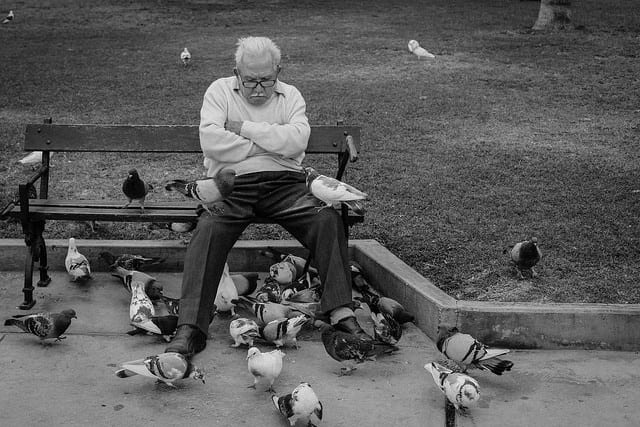
by Pigeon Patrol | Jun 30, 2023 | Bird Spike, Pigeon Predators, Pigeon Spikes, Pigeons, Pigeons in the News, Raccoons, Sparrows
From telephone wires to building ledges to public fountains, pigeons can be found nearly everywhere in a city. Unfortunately, that often means you can find them on your property, too. One pigeon may not be cause for alarm, but if pigeons have become regular visitors to your yard, you may have a problem on your hands. No homeowner wants to have to put up with these pests, but you can’t exactly just order them to leave. What should you do when you have a growing pigeon infestation? Here’s what you need to know.
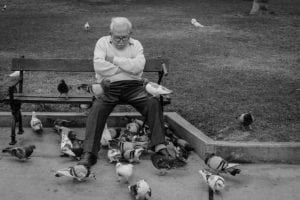
How Can I Tell if I Have a Pigeon Problem?
Much of the time, pigeon infestations are impossible to miss. Pigeons are relatively large, and their sounds are difficult to ignore. If you’re away from home a lot, or if you have a large yard, it may be easier for you to overlook a burgeoning pigeon infestation. If you find feathers, nesting materials, or pigeon droppings in your yard or on your roof, it’s a likely warning sign that the pests have invaded your property.
Will Pigeons Go Away if I Leave Them Alone?
You might be tempted to ignore the issue and just hope that the pigeons will go away on their own—and, on occasion, they will. It’s more likely, however, that the pigeons will not want to leave a place where they can roost and raise families undisturbed. This means that you’ll eventually begin to see more and more pigeons until your yard is overwhelmed with the birds. As a rule, the longer you wait to deal with a pest infestation, the larger that problem will become.
Can Pigeons Do Damage to My Property?
While some birds might be a welcome presence on your property, pigeons generally are not. There are good reasons for that: Pigeons make a mess, they’re noisy, and they’re a health hazard. They can also wreak extensive—and expensive—damage on your property, including your roof, your car, and even your solar panels. They can ruin your garden or your landscaping. In other words, these pests could end up costing you a lot of money. If you have pigeons on your property, you need to do something about it as soon as possible.
Can I Solve a Pigeon Problem On My Own?
You might assume that it would be easy to get rid of pigeons. Unfortunately, it takes more than going outside and waving your arms at the birds or shouting at them to discourage them from coming back. You might temporarily scare the birds away, but they’re likely to return as soon as you go back inside. Don’t bother using popular pigeon-removal methods such as cayenne pepper—these techniques don’t work. Putting up plastic owls and other deterrents also isn’t very likely to keep pigeons out of your yard. You shouldn’t waste time with these do-it-yourself methods.
What Can I Do to Get Rid of Pigeons?
The best thing to do if you have a pigeon infestation is to call a qualified pigeon control professional. A pigeon control company can put up structures such as netting to prevent pigeons from nesting or roosting around your property. They can also clean and sanitize the areas where the pigeons were taking up residence, helping to keep you and the other members of your household safe. Finally, a pigeon control company may offer a guarantee on its services, so you won’t have to worry about the pests coming back in the future. When it comes to pigeon control, there’s no substitute for experience and professional equipment.
How Can I Prevent Pigeons from Returning?
After you’ve paid to get rid of pigeons once, it’s unlikely that you’ll ever want to have to deal with the problem again. In almost all cases, pigeon abatement is sufficient to keep the pests away. There are some other things you can do, however, to discourage pigeons from making a home on your property. Make sure al trash containers are covered, and clean up any food scraps on your patio right away. Don’t leave pet food to sit outdoors overnight. You should also look for standing water, which can attract the birds. Finally, keep an eye out for the birds and be sure to call your pigeon control company again if you see them roosting anywhere on your property.
Source
Pigeon Patrol Products & Services is the leading manufacturer and distributor or bird deterrent (control) products in Canada. Pigeon Patrol products have solved pest bird problems in industrial, commercial, and residential settings since 2000, by using safe and humane bird
deterrents with only bird and animal friendly solutions. At Pigeon Patrol, we manufacture and offer a variety of bird deterrents, ranging from Ultra-flex Bird Spikes with UV protection, Bird Netting, 4-S Bird Gel and the best Ultrasonic and audible sound devices on the market today.
Voted Best Canadian wholesaler for Bird Deterrent products ten years in a row.
Contact us at 1 877-4-NO-BIRD,(604) 585-9279 or visit our website at www.pigeonpatrol.ca
Pigeon/Pigeon Patrol / Pigeons Roosing / Vancouver Pigeon Control / Bird Spikes / Bird Control / Bird Deterrent / PIgeon Deterrent / Surrey Pigeon Control / Pest / Seagull deterrent / Vancouver Pigeon Blog / Birds Inside Home / Pigeons in the cities / Ice Pigeons / What to do about pigeons / sparrows, Damage by Sparrows, How to Keep Raccoons Away, Why Are Raccoons Considered Pests / De-fence / Pigeon Nesting / Bird Droppings / Pigeon Dropping / woodpecker control / Professional Bird Control Company / Keep The Birds Away / Birds/rats/seagull/pigeon/woodpecker/dove/sparrow/pidgeon control/pidgeon problem/pidgeon control/flying rats/pigeon problems/ bird netting/bird gel/bird spray/bird nails/bird guard
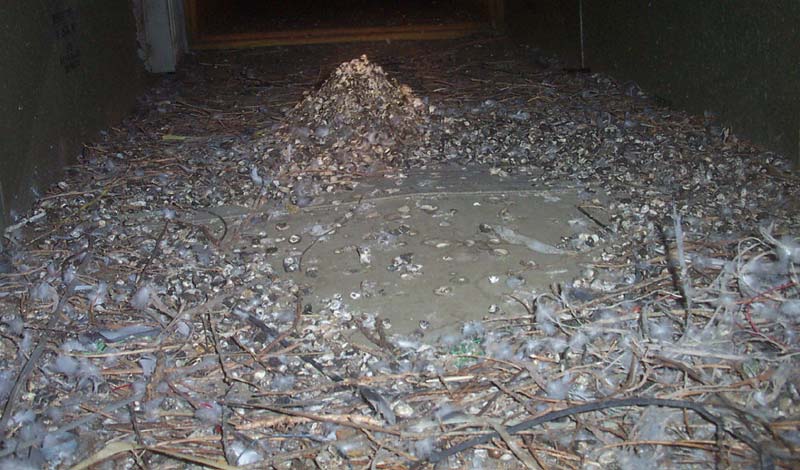
by Pigeon Patrol | Jun 30, 2023 | Bird Spike, Pigeon Spikes, Pigeons, Pigeons in the News, Raccoons, Sparrows, UltraSonic Bird Control
Q: I live on the 15th floor of an Upper East Side co-op with windows facing First Avenue. Pigeons are roosting on my window ledge. The birds’ vocalization is loud enough to wake me up in the morning and they leave behind gray and white stains from their droppings. I shoo the birds away when I’m home, but cannot do this all day. I want to be able to open my window in the spring without worrying that the germs from their droppings will enter my room. What can I place on my window ledge to discourage the pigeons from roosting there? I do not want to use anything that could fall off the ledge, endangering a pedestrian below, or poison the birds. What is a safe remedy?
A: You should be able to open your windows this spring without worrying that a pigeon will fly into your apartment or its droppings will soil your home. While their droppings do not generally pose a serious health risk, they are still unsanitary, and gross. But your building, not you, should get the birds off your ledge. As a shareholder, you are responsible for everything inside the walls of your apartment, and the co-op board is responsible for the building. So the board needs to figure out how to get the birds to find a new home.
“Residents should not attempt a solution on their own,” said Daniel Wollman, the chief executive of Gumley Haft, a Manhattan property manager.
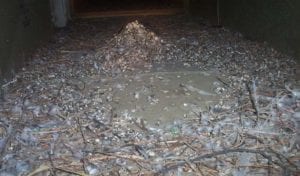
Write the managing agent and the co-op board a letter alerting them to the pigeon problem and insisting that they fix it. If the birds are nesting on your ledge, they are probably nesting on another resident’s, too. In the letter, ask that management also clean the ledge of any droppings.
The building should be able to get the birds to nest elsewhere without damaging the facade or risking the safety of anyone on the street below. For example, at a Gumley Haft-managed property with a pigeon problem in its inner courtyard, management suspended netting over the area to keep the birds away.
Netting will not solve the problem at your building, but there are other methods. John McGowan, the director of operations for Bugged Out Pest Management in Brooklyn suggested that your building consider using Bird Barrier Optical Gel, a bird deterrent, which he described as “awesome.”
Source
Pigeon Patrol Products & Services is the leading manufacturer and distributor or bird deterrent (control) products in Canada. Pigeon Patrol products have solved pest bird problems in industrial, commercial, and residential settings since 2000, by using safe and humane bird
deterrents with only bird and animal friendly solutions. At Pigeon Patrol, we manufacture and offer a variety of bird deterrents, ranging from Ultra-flex Bird Spikes with UV protection, Bird Netting, 4-S Bird Gel and the best Ultrasonic and audible sound devices on the market today.
Voted Best Canadian wholesaler for Bird Deterrent products ten years in a row.
Contact us at 1 877-4-NO-BIRD,(604) 585-9279 or visit our website at www.pigeonpatrol.ca
Pigeon/Pigeon Patrol / Pigeons Roosing / Vancouver Pigeon Control / Bird Spikes / Bird Control / Bird Deterrent / PIgeon Deterrent / Surrey Pigeon Control / Pest / Seagull deterrent / Vancouver Pigeon Blog / Birds Inside Home / Pigeons in the cities / Ice Pigeons / What to do about pigeons / sparrows, Damage by Sparrows, How to Keep Raccoons Away, Why Are Raccoons Considered Pests / De-fence / Pigeon Nesting / Bird Droppings / Pigeon Dropping / woodpecker control / Professional Bird Control Company / Keep The Birds Away / Birds/rats/seagull/pigeon/woodpecker/dove/sparrow/pidgeon control/pidgeon problem/pidgeon control/flying rats/pigeon problems/ bird netting/bird gel/bird spray/bird nails/bird guard












